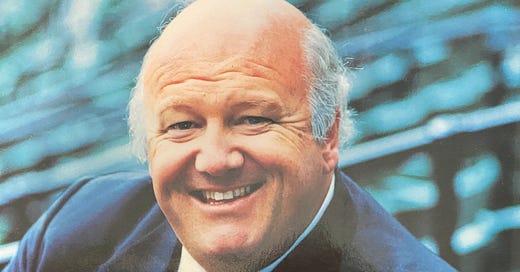Bird Tapes 2025: An Interview with Jon Miller (Part 2)
He discusses how moving to Camden Yards changed the Orioles and reflects on that fateful night in Yankee Stadium when “they had a win taken away from them by that kid." (You know his name.)
In Jon Miller’s first year as a Baltimore broadcaster, the Orioles reached baseball’s on-field pinnacle, winning the World Series for the third time. There was only one direction they could go from there, and sure enough, they soon entered a decline that culminated with a season-opening 21-game losing streak in 1988.
But a few years later, the Orioles again found themselves at a pinnacle in the baseball industry. It wasn’t measurable by on-field success, but with the opening of Oriole Park at Camden Yards, their new home in downtown Baltimore, they revolutionized ballpark design, nearly doubled their attendance and were envied by other clubs.
As much as any observer, Miller understood how the move from one ballpark to another changed the Orioles. He was their play-by-play voice for their last eight seasons at Memorial Stadium and their first five seasons at Camden Yards.
“It showcased the Orioles in a great light that they got the stadium so right,” Miller told me during our recent interview, the second part of which is available below to paid Bird Tapes subscribers. “For years, the Dodgers had always been the model organization, and now people were looking at the Orioles and saying, ‘Wait a minute, that’s not LA, that’s not New York; that’s not a huge market and yet look what they’ve done there (with their ballpark and attendance). We need to figure out how they’re doing it.’ At the owners’ meetings (team president Larry) Lucchino was always being grilled by these other owners (asking) ‘How do you do this? How do you do that?’”
In Part 1 of my interview with Miller, posted a week ago, he focused on what happened to the Orioles on and off the field in the ‘80s. In Part 2, his focus is the early ‘90s, the importance of Camden Yards and the club’s return to the postseason under manager Davey Johnson in 1996. He credits Johnson’s move to a four-man rotation late in the season as a key strategy that helped the club reach the playoffs for the first time in 13 years.
After making it with a Weaver-era-like late push, the Orioles upset the Cleveland Indians in the divisional round of the American League playoffs. In Game 1 of the league championship series against the New York Yankees, they had a 4-3 lead in the eighth inning when one of the most infamous moments in Oriole history occurred. The Yankees’ Derek Jeter hit a ball to deep right field. Up against the wall, Orioles outfielder Tony Tarasco appeared in position to make the catch when a 12-year-old Yankee fan named Jeffrey Maier reached for the ball and wound up redirecting it over the fence. Umpire Richie Garcia let the play stand as a game-tying home run instead of ruling that Maier had interfered. The Yankees won the game in extra innings.
I was on hand that night, covering the game for the Baltimore Sun, but from my vantage point in an auxiliary press box down the left field line, it was hard to tell exactly what happened. But Miller, from his vantage point in a broadcast booth behind home plate, saw it clearly and suggested in real time, as it happened, that there’d been interference.
Recalling the play in our recent interview. Miller said, “That call would have been totally overturned nowadays with the replay review system (in place). That was a win that got taken away from them by that kid.”
Music to the ears of any Oriole fan.
As it happened, the Orioles recovered and won Game 2 the next afternoon, and the series moved to the Baltimore for the next two games. The stage was set for an upset, but the Yankees won both games at Camden Yards to take the best-of-five series.
“They still had their shot to do it and couldn’t win a game,” Miller said.
The last game of the series was Miller’s last game as an Orioles broadcaster. His contract was up. Negotiations on a new deal had gone nowhere, leaving Miller no choice but to consider other jobs, one of which wound up being a dream opportunity for Miller, who’d grown up in the Bay Area — calling the San Francisco Giants’ games. He still has that job 29 years later.
In Part 3 of my interview with Miller, to be posted in a couple of weeks, he delves deep into exactly what happened when he left Baltimore for San Francisco after the 1996 season — still a sore subject for Baltimore fans.
(Note from John Eisenberg: It takes a paid subscription to hear the Miller interview and gain access to the entire Bird Tapes archive of interviews with former Oriole players, executives and broadcasters. If you’re a free subscriber and want to upgrade to paid, click on the “subscribe now” button.)
Keep reading with a 7-day free trial
Subscribe to The Bird Tapes to keep reading this post and get 7 days of free access to the full post archives.





